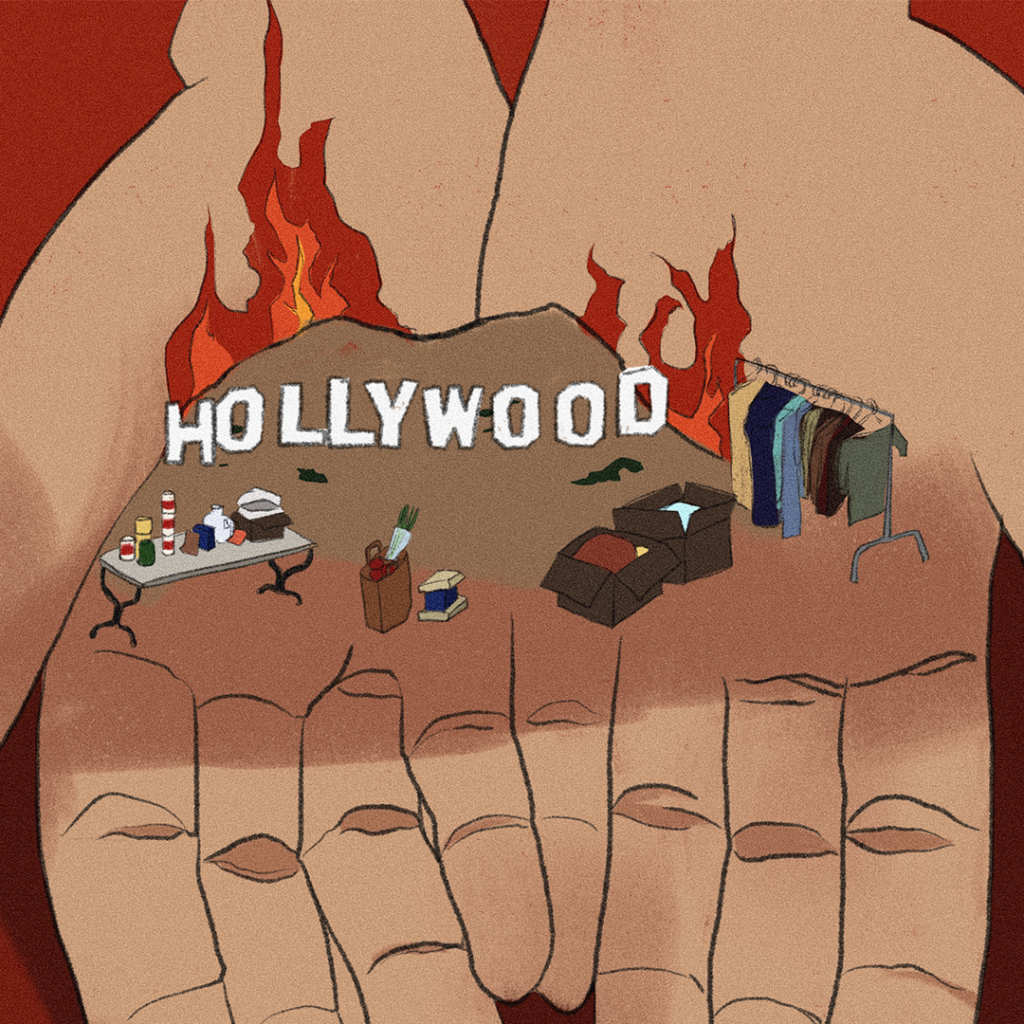
SUNN Post Exclusive
On January 7, the unthinkable happened.
A blazing fire shattered the tranquility of a regular Tuesday and the hopeful start to a new year. In the first week of 2025, small wildfires flickered to life in the Pacific Palisades region, an ominous prelude to the catastrophe that would soon unfold. Then, in a single day, seven critical fires erupted across the Golden State, engulfing the Palisades, Malibu, Topanga, Altadena and beyond.
As families received urgent evacuation orders, many assumed the flames would remain contained to the parklands. But as night fell, everything changed. Fueled by fierce Santa Ana winds, the fire spiraled into an unstoppable force. Air support struggled to keep pace as the blaze tore through communities, and by morning, entire neighborhoods lay in ruins. Thousands were displaced, and countless homes were lost.
Los Angeles was swallowed by flames, blanketed in smoke and gripped by devastation. Now finally contained, the fires in the Palisades and Altadena are among the most destructive in California’s history. Over 16,000 buildings have been reduced to rubble, tens of thousands of people have been forced to evacuate, and at least 28 lives have been lost.
Wildfires are nothing new to Californians. Our landscape has evolved alongside them for millions of years, shaping plant life that is resilient and even dependent on fire for survival. But today, these fires are not simply a part of nature’s cycle — they are a crisis driven by human impact.
For Palos Verdes environmental science teacher Tori Fay, preparedness can save lives.
“The best thing students can do preventatively is to have a plan with your family,” Fay said. “Have conversations about what to take during an evacuation because you’re not going to make the best decisions in an emergency.”
That preparation must happen at all levels. The devastation of fires like these extends beyond the physical. It fractures communities, upends lives, and leaves a lasting emotional toll on entire cities.
Among the hardest hit this time were local schools, including Palisades Charter High, where students lost more than just buildings; they lost a space central to their daily lives, friendships, and futures. Now, students are scattered across temporary learning spaces, disconnected from their routines and support systems. Educators and families alike are struggling to rebuild.
As we sift through the ashes, the question we must ask ourselves is not just how we rebuild and prevent more disasters, but how understanding them informs our actions. The answer is not to fear fire but to understand it — to find a way to coexist rather than constantly battle against it.
“The instinct is to say that fires are bad,” Fay points out. “But in fact, fires are a healthy part of these ecosystems. The question is, how do we get back to a place where we’re in balance with our fire cycle?”
According to the U.S. Forest Service, wildfires predate humans as a “natural disturbance” that develops and reorients ecosystems.
Fire-fighting generally keeps residential fires contained no matter how they start, but in L.A., extreme weather came into play, with high winds and drought conditions exacerbating fires that otherwise would have remained small.
We cannot afford to keep treating wildfires as isolated disasters. They are a direct consequence of our choices — our urban expansion, our carbon emissions, and our neglect of proactive forest management.
There are preventative actions we can take to minimize damage. Investment in higher-density housing and public transportation allows for more open spaces that insulate communities, Fay explained.
Fay advocates for higher-density housing and improved public transport in urban areas to reduce environmental risks. Instead of rebuilding in disaster-prone areas, cities should buy vulnerable land and preserve it as open space.
“If you live in a burnable area, your house should have a non-flammable roof and a defensible space — at least 15 feet of cleared vegetation around your home. This can help prevent fires from spreading,” Fay said.
Until we acknowledge this reality fully and act accordingly, California will continue to burn nearly unrestricted. Natural disasters leave no easy answers, but they demand hard conversations. More fires will happen in the years to come — which means we need to get to a place in communication with nature, not in opposition to it.
In the face of such widespread loss, resilience requires funding. Federal aid from FEMA has provided essential relief so far. Unfortunately, FEMA itself has come under attack from the current presidential administration, so funds may not always arrive federally in the future. Trump officials have repeatedly spread misinformation about the agency and most recently have threatened to tie FEMA aid to voter ID legislation.
For many survivors, the most meaningful support has come in the form of human connection. While material donations and physical relief efforts are of the utmost importance, a simple message or call can also deliver powerful reassurance.
Small acts of kindness reaffirm the human connections that sustain us, reminding survivors that they are supported. There’s nothing more powerful than knowing that, even in devastation, those connections endure. Times of crisis bring out the best in us, revealing countless acts of bravery, generosity, and kindness.
One of the most challenging emotions is helplessness, and the frustration of wanting to make a difference but not knowing how. No one can face this crisis on their own. It takes all of us, working together, one step at a time, to ensure our neighbors know they are not alone and that whatever nature brings, we’ll be ready.
